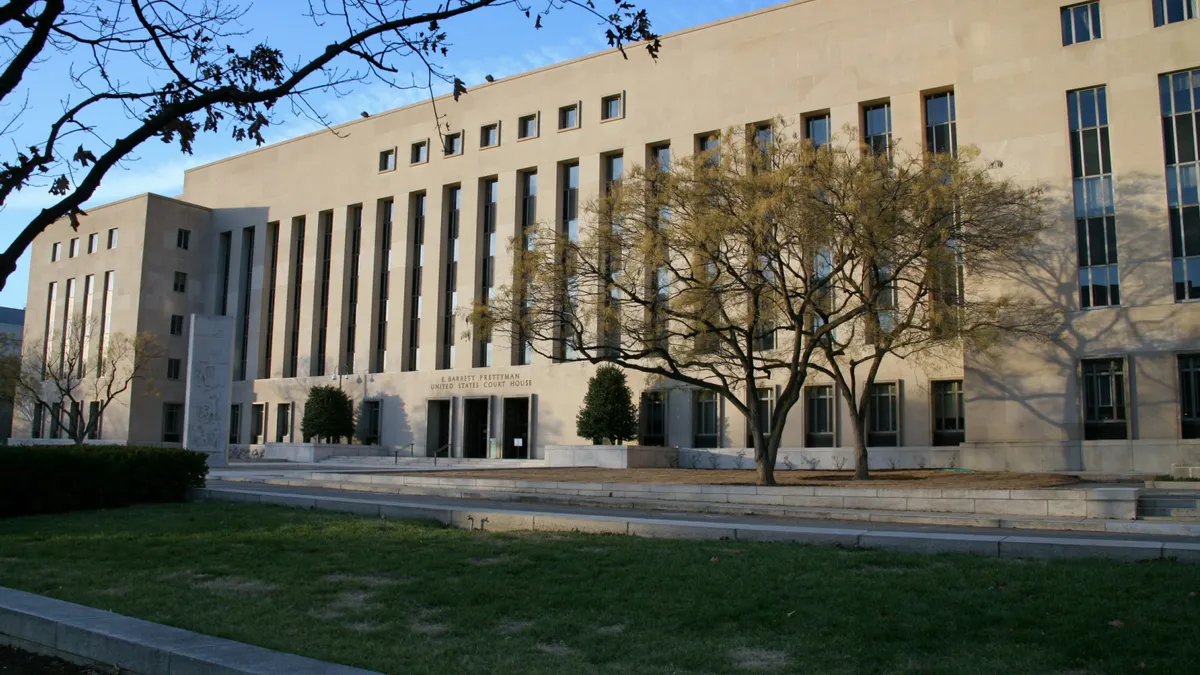Dive Brief:
- A federal appeals court dismissed a complaint by Entergy and Xcel Energy utilities seeking to overturn a Federal Energy Regulatory Commission decision setting a cost allocation methodology for a class of Midcontinent grid operator projects that connect with the PJM Interconnection’s system.
- After rejecting two Midcontinent Independent System Operator proposals, FERC properly set a cost allocation methodology for interregional transmission projects between 100 kV and 230 kV, the U.S. Court of Appeals for the District of Columbia Circuit said in a decision issued Friday.
- The utilities, which were supported by the Missouri Public Service Commission, failed to show FERC’s replacement cost allocation methodology was not just and reasonable, according to a three-judge panel.
Dive Insight:
The court decision stems from a 2013 complaint filed by Northern Indiana Public Service Co. over how MISO handles transmission projects on its border with PJM.
Ultimately, MISO in 2019 proposed a new process for reviewing certain lower-voltage projects along its borders with PJM and the Southwest Power Pool and a cost allocation plan for those projects.
FERC rejected the initial MISO proposal, and in 2020 it rejected a revised proposal, saying they violated a principle that project costs should be shared by those who benefit from them. At the same time, FERC set its own cost-sharing methodology for those projects.
A group of utilities asked the appeals court to overturn FERC’s decisions, partly arguing that it would force them to pay for transmission projects that they didn’t benefit from. Some of the utilities withdrew from the case.
In its decision, the appeals court dismissed Entergy’s and Xcel’s argument that FERC’s decision to reject MISO’s second interregional filing was arbitrary and capricious because the agency failed to identify significant regional benefits that interregional transmission projects provide.
The court also rejected the utilities’ argument that a key court decision known as Old Dominion required FERC to set its cost allocation methodology with exact precision.
“A general principle of Old Dominion is that in order for a cost allocation method to be consistent with the cost causation principle, such method cannot ‘prevent regionally beneficial projects from being arbitrarily excluded from cost sharing,’” the court said. “FERC reasonably concluded that MISO’s proposed cost allocation method would do just that.”
On the issue of FERC’s cost-sharing methodology, the court said the utilities’ argument boiled down to their belief that there was a better approach to the issue.
“It is not our job to determine that ‘FERC made the better call,’ rather, our ‘important but limited role is to ensure that the Commission engaged in reasoned decisionmaking — that it weighed competing views, selected a ... formula with adequate support in the record, and intelligibly explained the reasons for making that choice,’” the court said, citing a previous decision. “FERC has satisfied this standard.”














